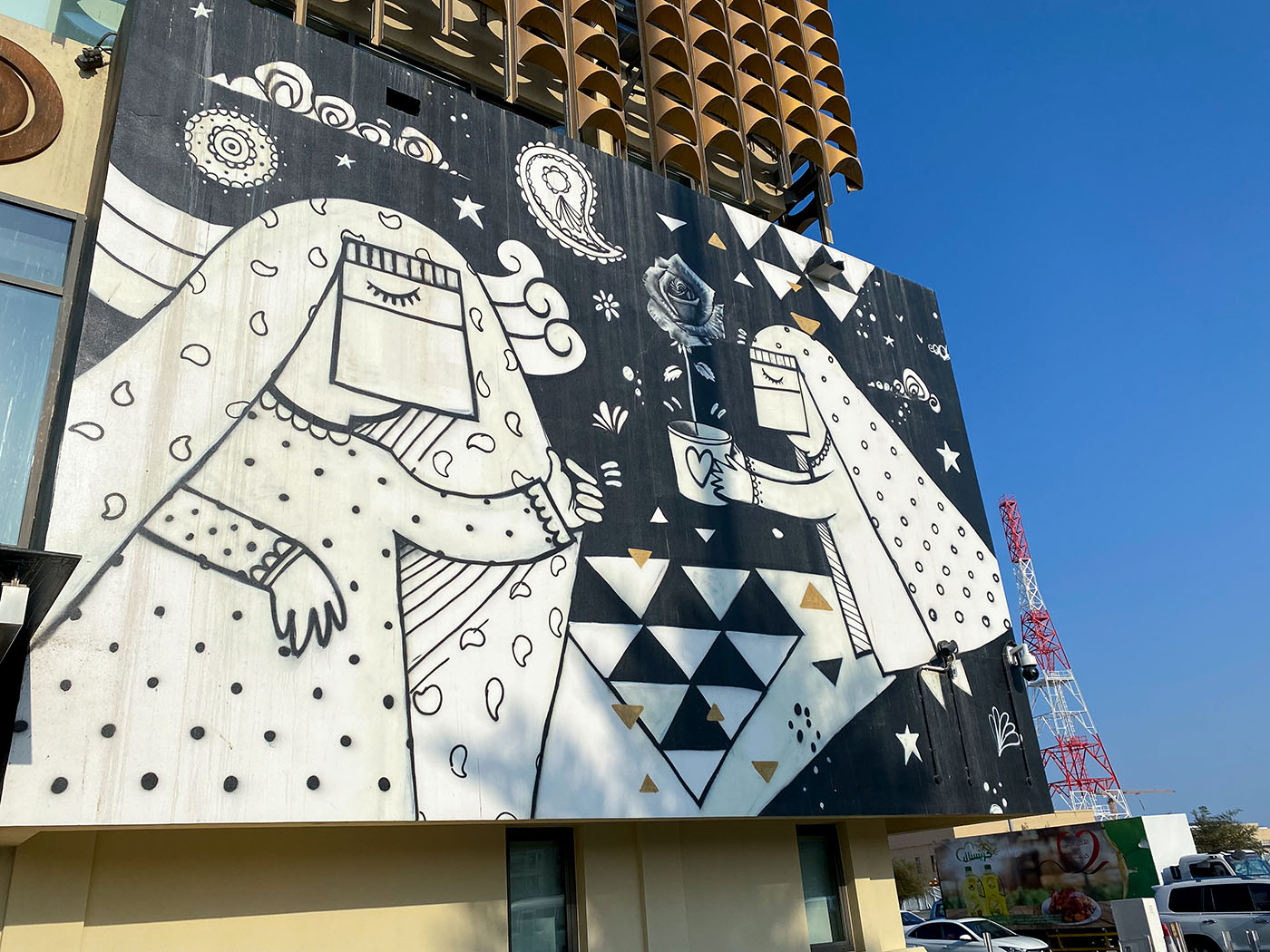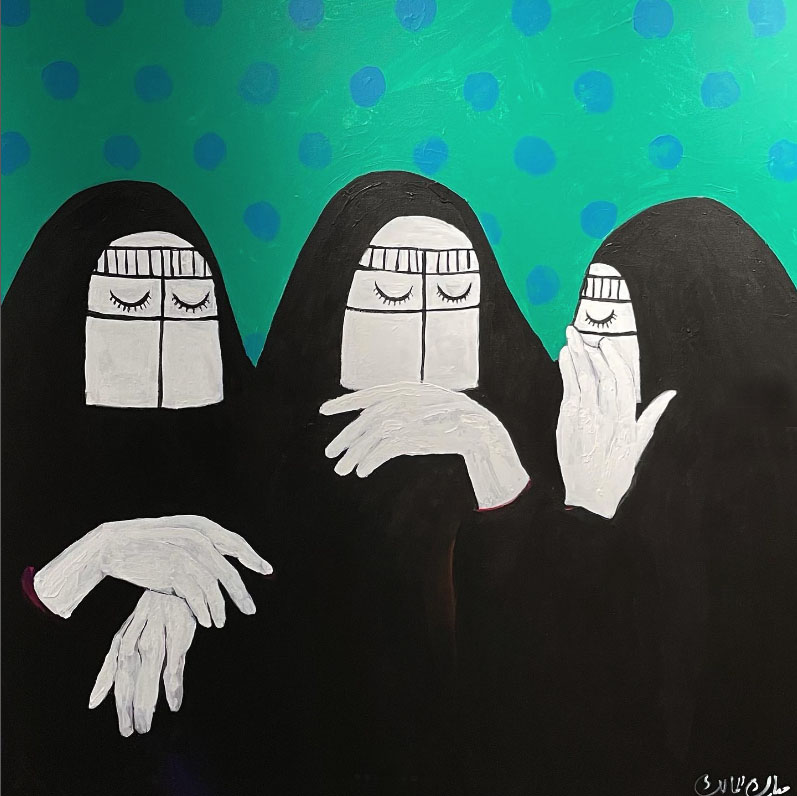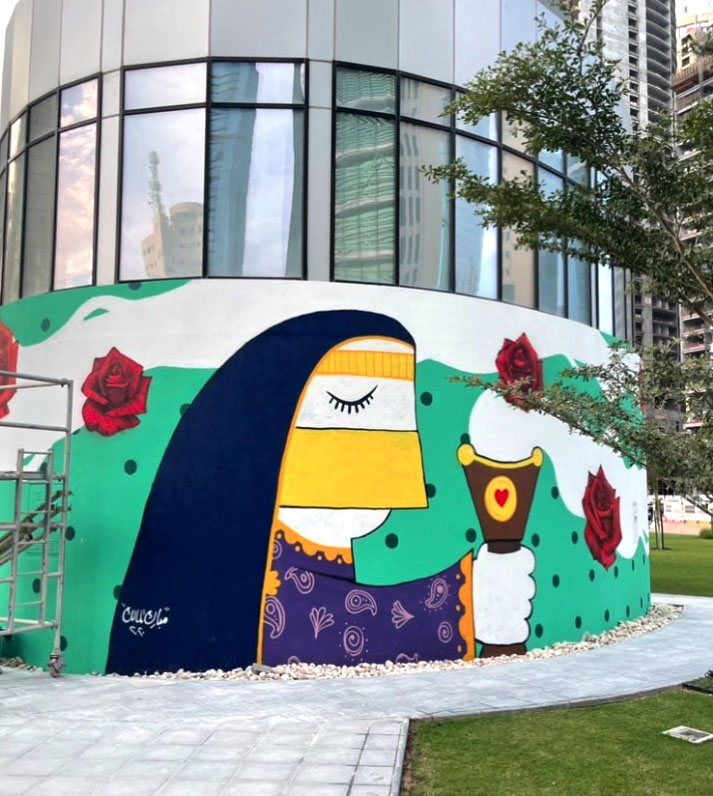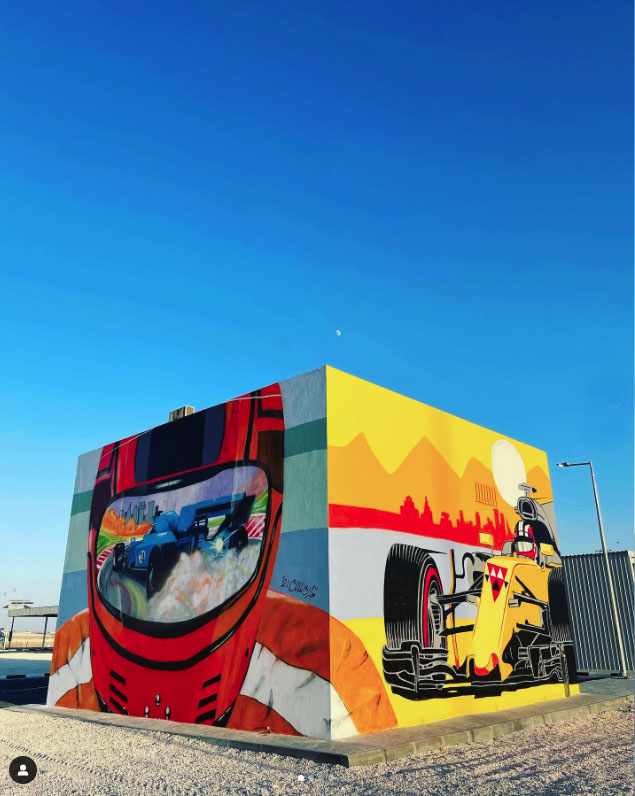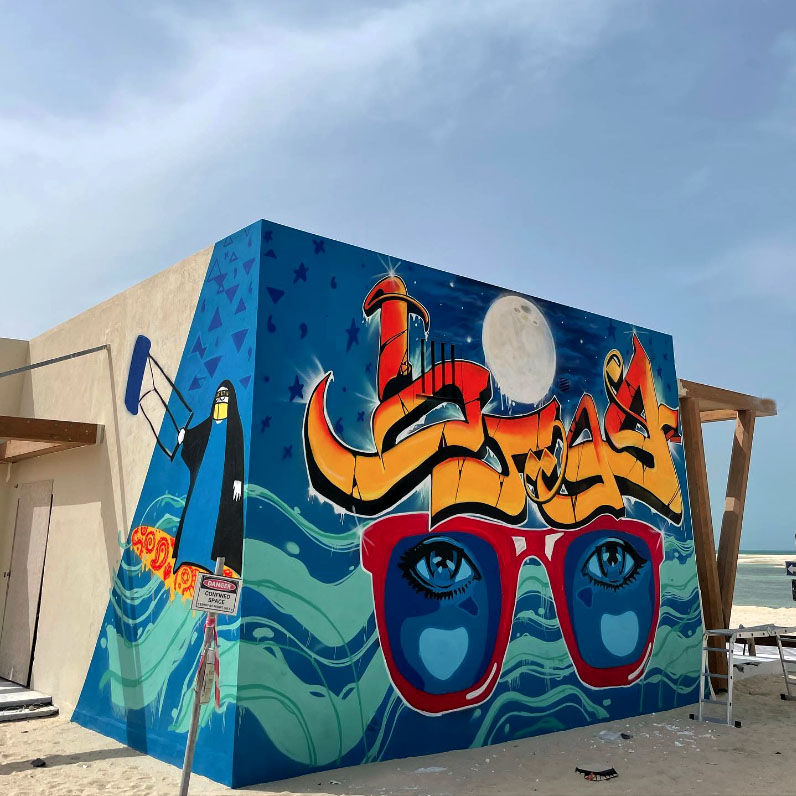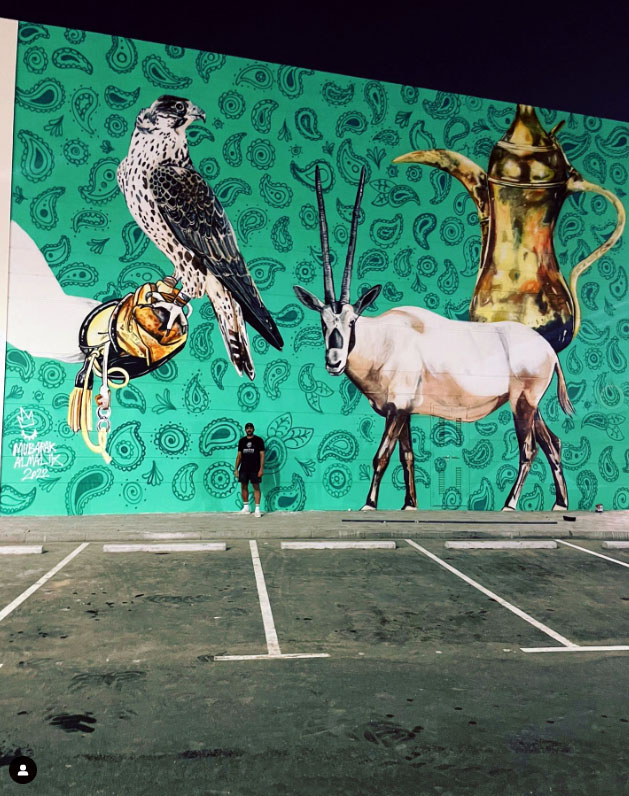Christina Paschyn
On a wall outside Qatar Academy in Doha, a young woman with piercing eyes stares out from behind a pointed mask. She is wearing a batoola: a face-covering similar to the niqab, but less concealing. It is made of leather or cloth with a central strip that runs down the nose and ends in a flared tip. For centuries, women in the Gulf wore variations of the batoola, said to mimic a falcon’s beak. But today, few young Qatari women don them. The tradition lives on, however, in the vivid graffiti murals of Mubarak Al-Malik.
“The batoola represents culture, traditions, and home,” the 35-year-old Qatari street artist explained in an interview with TMR, adding that his grandmother was his muse.
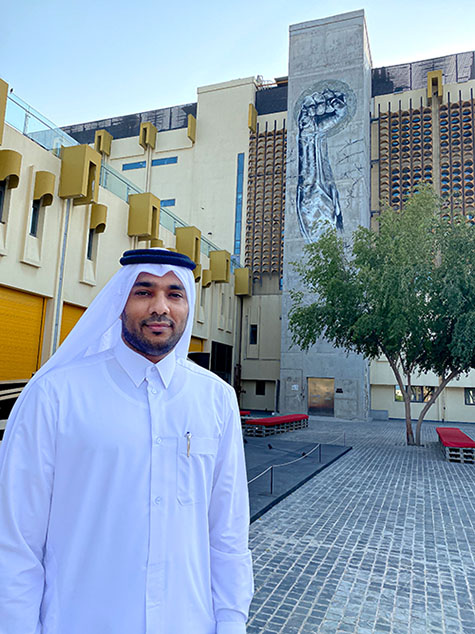
“My grandmother, who used to live with me, wore the batoola, and seeing it every day made me want to represent it in my work as a personal homage to her. I also wanted to incorporate an original representation of Qatari people in my works.”
Al-Malik’s grandmother passed away three years ago, but he continues to promote her legacy through street art. His art is displayed throughout Qatar, including outside several stadiums built for the 2022 World Cup, and now even beyond.
Indeed, in 2021, Al-Malik collaborated with Qatar Museums’ JedariArt program to bring his signature motif to the Wynwood district of Miami, Florida, where he created a mural of a batoola-wearing woman guiding a dhow ship toward the Miami shoreline. As Middle Eastern and Muslim clothing, particularly women’s facial coverings, are often ridiculed and politicized by Americans and Europeans, Al-Malik worried the city’s residents would reject his art. But his apprehension faded when the piece was unveiled.
“I talked a lot with the people there, and I explained to them our traditions and about Qatar. And they listened. It wasn’t what I was expecting,” he said.
Perhaps the unexpected best describes Al-Malik’s artistic trajectory. His uncle is Salman Al-Malik, a renowned abstract artist, and when Al-Malik first began exploring painting as a teenager, his uncle’s style inspired him.
“I would bring over my paintings to show him,” Al-Malik recounted. “He was very helpful and would always take the time to offer advice on color, technique, and materials. He frequently bought me paints and canvases.”
For a while, he followed in his uncle’s footsteps, exhibiting canvases and sculptures in local galleries. But travels to Europe and the United States in 2010 drew his attention to graffiti art, sparking a desire to explore the alternative medium. When he returned home, he taught himself the art of graffiti by watching spray-painting tutorials on YouTube. His parents even designated an entire wall inside the house on which he could practice. Then, when he had polished his technique behind closed doors, he did what many graffiti artists do: he took to the streets — illegally.
“I spray-painted at midnight, usually on Friday mornings. There was one rule I had for myself, and that was I would not spray-paint new or in-use buildings,” Al-Malik explained. “So, I went around looking for damaged and abandoned ones and proceeded to make them beautiful.”
Despite the precautions, he still got caught. But just as in Miami, the response was unexpected: “The police caught me three times, but when they saw that all I was doing was creating art, they let me go. They liked it!”
The rest of Qatar has seconded that sentiment. Al-Malik’s work is applauded on social media, and cultural and art institutions, such as the Katara Cultural Village and Doha Fire Station, invite him to spray-paint in their spaces. Al-Malik said he hasn’t experienced backlash, either for his art medium or content.
“A lot of people, even government guests, have commissioned my work,” he said. “When I go outside to any wall, I take my time and put a lot of thought into what I am going to produce. I inject a lot of love into any work going onto the wall so that, in turn, the people will love it, too.”
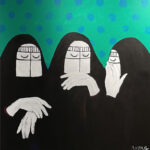
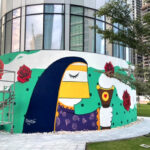

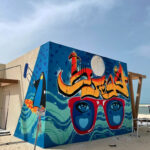
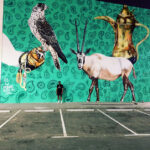
As Al-Malik’s star has risen, so have the comparisons. His fans refer to him as the Qatari Banksy. But while he has said he admires the British artist, he is not interested in producing political art. Indeed, of Al-Malik’s works reviewed by this writer, only one can be described as overtly political: that of a fist bursting through barbed wire. Rising into the sky on a tall concrete tower at the Doha Fire Station, the mural was commissioned by Qatar Museums in 2017. It represents Qataris’ and residents’ strength during the blockade, when Saudi Arabia, Bahrain, the UAE, and Egypt severed diplomatic, economic, and travel ties with Qatar from June 2017 to January 2021.
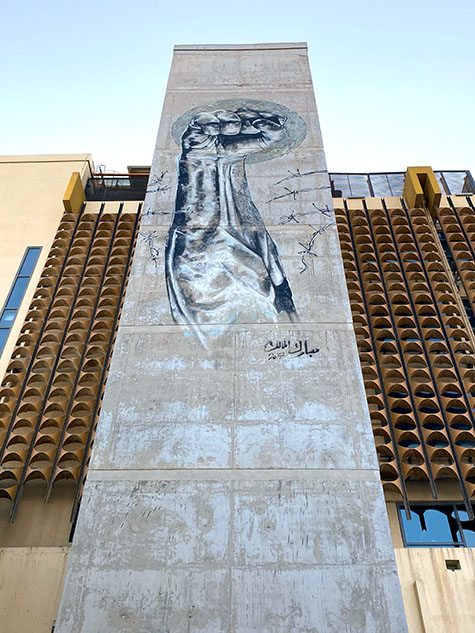
It is one of his few graffiti pieces that don’t feature the batoola — something the artist isn’t keen to repeat anytime soon.
“I have many styles, sometimes realistic and sometimes more cartoonish and others as abstract creations. But whatever I choose to do, the batoola remains the central focus of the work at hand.”
Ultimately, Al-Malik’s vision is not only to challenge stereotypes about Qatar, but also to revitalize the country through street art. This transformation is already underway, he told TMR.
“There is a huge effort to bring drawings and art to the public. Every day, on the way to work, one can enjoy the artwork on the streets. People who hadn’t been interested in art are now inquiring about the artists and their techniques because art has become more accessible,” he said. “It’s an exciting time to be a street artist [in Doha].”



